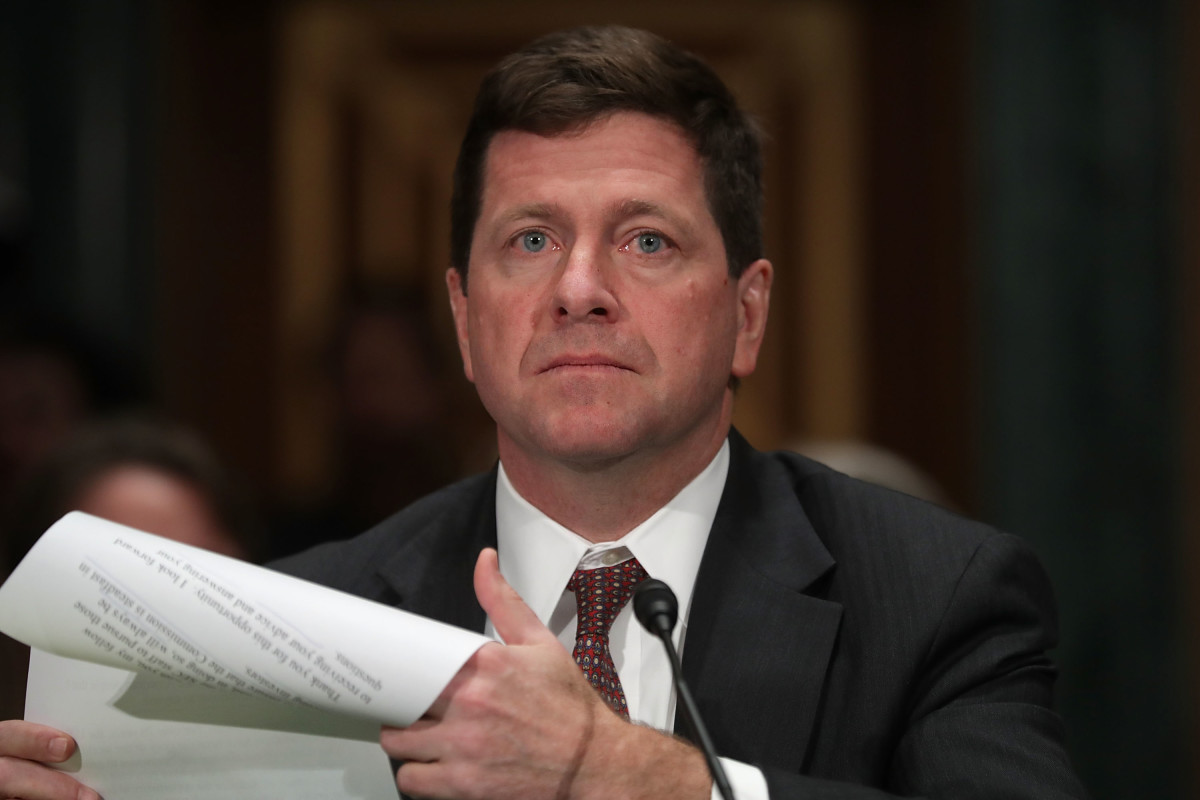Kim Davis
There seem to be two ways to interpret Justice Clarence Thomas and Samuel Alito’s response within a unanimous Supreme Court Order refusing to take up the case of Kim Davis v. David Ermold. One interpretation issued by Mark Stern, is that with the imminent ascension of arch conservative Amy Barrett to the Court, this new super conservative majority will overturn Obergefell v. Hodges “which recognized same-sex couples’ right to marry.” The other interpretation made by Scott Shackford, dismisses such concerns about same-sex marriage recognition being overturned as “panic.” As is so often the case, however, the truth lies somewhere in the middle (for the record I am well aware of how cliché this sentence sounds but bear with me). No, I do not think gay marriage will be overturned even though I think Thomas, Alito, and Barrett are eager to do so if given the chance. But with a new super conservative court, it is all but certain that gay marriage recognition/protections will be afforded so many religious exceptions that in many areas of the country such recognitions/protections will exist in name only.
First, let us dive into a little bit of background of the Kim Davis case. As many will undoubtedly remember, Davis was a clerk in Rowan County, Kentucky, who refused to issue a marriage license to a same-sex couple based “on God’s authority” shortly after the Obergefell ruling. As a result of her refusal, Davis was held in contempt and jailed for five days. Upon her release from jail, Davis was met by then president hopeful Mike Huckabee who loudly praised her defiance of the law (for those keeping score Huckabee has now completely “reversed” his stance on defiance to the law because, you know, LAW AND ORDER IS NOW ALL THAT MATTERS!). Since her release from jail, Davis has also faced civil litigation over her refusal to follow the law, and it is over the matter of her civil liability that the Supreme Court addressed in its order.
Davis had been trying to invoke qualified immunity, which is a court-fabricated immunity that almost always protects government actors from facing consequences when they violate a citizen’s rights leaving victims “violated but not vindicated.” The Sixth Circuit made an exception, however, and denied Davis this immunity which the Supreme Court refused to overturn via an order where Thomas and Alito agreed with the refusal but nevertheless ranted about how the Obergefell decision has made Christians victims of official stigmatization. Glancing over the transparent absurdity of claiming that official stigmatization is unlawful against Christians but up to the states when it comes to same-sex couples, let’s explore why Obergefell is not at all likely to be overturned.
As Shackford convincingly points out, given that the Bostock ruling (which included both Roberts and Gorsuch in the majority opinion), “says it violates the Civil Rights Act to discriminate against an individual for being gay or transgender, it’s hard to imagine how the Court could then restore a ban on same-sex marriage recognition. Not unless it overturned both precedents.” So, while a restoration of a complete ban is therefore all but certain to fail, what Shackford touches on but I think misses the point is the degree to which a super conservative court will afford religious exceptions to gay marriage recognition.
In Bostock for example, although Gorsuch agreed discrimination against gay or transgender citizens violates the Civil Rights Act, he also made a point to identify the Religious Freedom Restoration Act (RFRA) as a “super statute” that can displace “the normal operation” of federal laws for religious belief. In other words, Gorsuch was acknowledging that religious folks, and religious folks only, as RFRA has always denied to nombelievers, may not have to abide by the Civil Rights Act (though he expressly left the decision open to a future case).
It is the favoritism and extension of religious belief being held superior to the law that I find troubling, more so because at every turn this free conscience, free exercise right to defy the law is regularly being denied to nonbelievers. Where is the nonbeliever exception to laws that force then to financially support religious monuments, churches, and schools? If only religious people are afforded such rights to dissent, we cease to have a society committed to pluralism but rather one committed only to the protection of certain kinds of beliefs.
A case that could determine how far the Court is willing to make the professed doctrines of religion superior to the law is the upcoming Fulton v. City of Philadelphia case. In that case a religious organization is arguing that not only does it have the right to refuse to abide by the City’s anti-discrimination laws when operating a foster care center within a government program, but that unless the City allows it to deny foster children the right to have full access to all loving, and qualifying homes it is the City who are the bigots. Before Barrett’s nomination, I was fairly confident that the religious organization in Fulton would lose. Replace Ginsburg with Barrett however, and I would change my assumption entirely. More to the point, if the Court rules that churches can become countries unto themselves where the rules and the law do not apply, to the degree that foster children can be denied government benefits in a government program, then I would not hold out much hope for the future of gay marriage recognition.
 Tyler Broker’s work has been published in the Gonzaga Law Review, the Albany Law Review, and is forthcoming in the University of Memphis Law Review. Feel free to email him or follow him on Twitter to discuss his column.
Tyler Broker’s work has been published in the Gonzaga Law Review, the Albany Law Review, and is forthcoming in the University of Memphis Law Review. Feel free to email him or follow him on Twitter to discuss his column.









 Jordan Rothman is a partner of
Jordan Rothman is a partner of 


 Olga V. Mack is the CEO of
Olga V. Mack is the CEO of 
 Tom Kulik is an Intellectual Property & Information Technology Partner at the Dallas-based law firm of
Tom Kulik is an Intellectual Property & Information Technology Partner at the Dallas-based law firm of 
 Charles Hecht is an entrepreneurial lawyer who had his own firm for 39 years and recently joined Balestriere Fariello as a partner. He specializes in innovative solutions to complex litigation, arbitration, and securities transactions. He values teamwork, which is one of the reasons why he joined a New York City boutique law firm. He and his colleagues represent domestic and international clients in litigation, arbitration, investigations by governmental agencies, and securities transactions. You can reach him via email at
Charles Hecht is an entrepreneurial lawyer who had his own firm for 39 years and recently joined Balestriere Fariello as a partner. He specializes in innovative solutions to complex litigation, arbitration, and securities transactions. He values teamwork, which is one of the reasons why he joined a New York City boutique law firm. He and his colleagues represent domestic and international clients in litigation, arbitration, investigations by governmental agencies, and securities transactions. You can reach him via email at